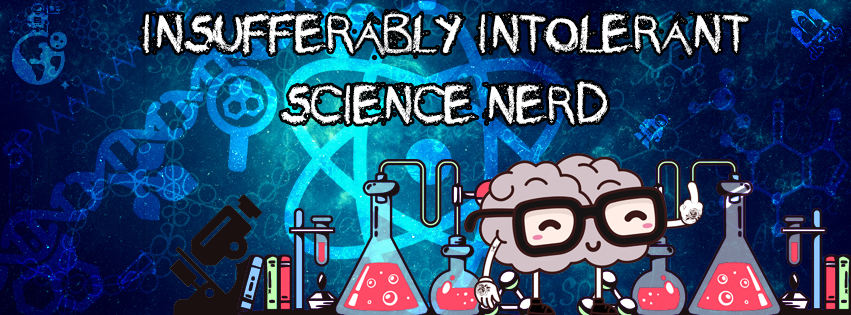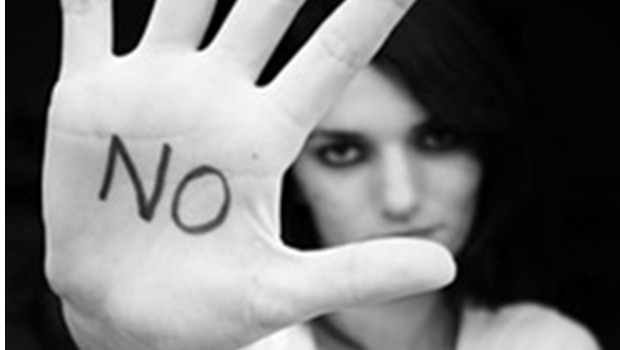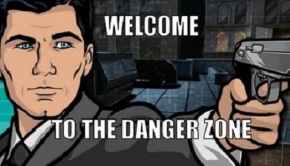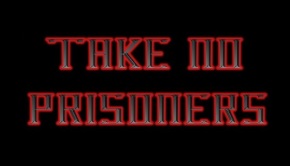5 Myths Regarding Alternative Medicine That Just Need to Stop
Alternative medicine is the new black – it’s hip, it’s stylish and apparently, it works with everything.
It’s the biggest load of shit, right up there with faith-healing.
Alternative medicine is a group of treatment practices that haven’t been accepted by scientific or medical consensus as an effective treatment for illnesses or disease. As the name suggests, the various practices are promoted as an alternative to evidence-based medicine, they are often completely outside the realm of science and often they fit more snuggly into the realm of mysticism and the supernatural.
I was under the impression we had abandoned our tendency to understand the world through the eyes of supernatural explanations with regards to health and medicine. We have evolved from using “demons” as the definitive answer to life, the universe, and everything and we no longer use blood-letting as a treatment for illness.
I was wrong, the Dark Ages, it seems, is still alive and well in 2015.
Alternative medicine consists of a wide range of therapies including but not limited to: diagnostic-based therapies such as Chiropractic, Reflexology and Iridology (where illness is diagnosed via specific body parts only), Naturopathy (where illnesses are treated with herbs), Homeopathy (where illnesses are treated with highly diluted substances in water/brandy), Crystal Healing (where illnesses are treated using crystals), Acupuncture (where illnesses are treating by sticking needles into the body) and Reiki (where illnesses are treated by not touching the patient). Alternative medicines can also include unproven often dangerous “treatments” that aren’t approved by medical science such as chelation or bleach enemas for the treatment of autism or drinking baking soda mixed with water to cure cancer.
In a previous article, I discussed the differences between the scientific method and the faith-based institution that is alternative medicine. Practitioners of alternative medicine often employ a variety of methods to promote alternative medicine as something more than mere opinion and fallacy. This is quite a task for a practitioner as they have their work cut out for them due to lacking scientific support. Support for their therapies of choice rely more on emotion than fact and the methods used to disguise the lack of scientific support is disingenuous at best.
Due to this clear lack of adherence to the scientific method, practitioners have a toolbox of myths they use to defend their treatments against scientific scrutiny.
Myth #1: That it is safe, natural and gentle.
By far the largest myth about alternative medical practices is the idea those practices are safe, natural and gentle. This is often used in contrast with medical procedures that can come with risks and complications. Clearly, a treatment with no risks involved would be more appealing to an individual than a treatment that is fraught with risk and possible complications.
The fallacy that alternative medicines are safe, natural and gentle, stems from a lack of understanding of the fundamentals of medicine and science. Alternative medicine is called “alternative” for a reason – it hasn’t been accepted into the realm of evidence-based medicine, the number one reason for this is the lack of scientific evidence supporting the effectiveness of the therapies in treating illness.
At this point in time, alternative therapies haven’t really been proven to work any more than a placebo, homeopathic treatments are just sugar pills, vitamins from a naturopath are useless for those who don’t have vitamin deficiencies and Reiki “healers” don’t touch you at all. Alternative treatments shouldn’t be deemed “safe and gentle” because they are better than medicine, they should only be deemed “safe and gentle” because there is nothing to them.
Some alternative therapies are benign and pose no real harm except perhaps to your wallet, however other therapies such as Chiropractic have been linked to strokes. Even the benign therapies such as homeopathy can be harmful – while ingesting small amounts of water isn’t harmful, ingesting small amounts of water to cure cancer is harmful. The water isn’t going to kill you, however abandoning medicine in favour of alternative treatments that do nothing, certainly will.
Myth 2#: That it works for treating illness.
Homeopathy is a good example of this. Homeopathy is the idea that diluting a substance in water an extreme number of times is an effective form a treatment. The underpinning framework of homeopathy is “less is more”, the less physical substance in the water, the more power the treatment remedy is, despite the fact Avogadro’s constant – a basic law of Chemistry debunks this idea. The common way homeopaths get around this is by citing the water holds the “memory” of the substance it once had in it – which is alarming to say the least. How is it that water can remember one specific substance it once had in it but not every other substance it has had in it? The mechanism is never explained.
Alongside the explanation of “water memory”, homeopaths expand on the original idea of “less is more” stating the less physical substance, the stronger the “vital essence” of the substance there is in the treatment solution. Not surprisingly, how this occurs is never explained. One could assume the ghost of the original substance gets stronger the less tangible the substance becomes, putting homeopathy firmly in the realm of supernatural mysticism and faith and not evidence-based medicine.
Indeed, if we were to examine the underpinning frameworks of the various alternative practices, we would soon see that most of them are rooted in either mysticism and supernatural unprovable concepts or misunderstandings of medicine and anatomy. Acupuncture has Meridian lines – lines within the body that house the mystical Qi, a supernatural force that keeps the bodies “balance” in check which has never been found by X-Ray or surgery, Chiropractic has subluxations that cause illness despite no evidence that a misalignment of the spine causes anything more than back pain. Iridology promotes the idea that illnesses can be diagnosed via looking very closely at your eyes, despite the lack of feedback system connecting any organs to the eyes. I’m not sorry to say but appendicitis cannot be diagnosed by looking into a person’s eyes.
Apologists for alternative medicine often bite back with statements such as “Just because science hasn’t found it, doesn’t mean it doesn’t exist”. Science knows when to stop flogging a dead horse when it has established something lacks evidence. Just because science hasn’t found evidence to support the existence of the underpinning frameworks of alternative therapies, doesn’t mean science has failed – it means the therapies haven’t established themselves as anything based in reality. What it means is the Burden of Proof is on the practitioners of alternative therapies to give supporting evidence for the existence of the framework of their therapies.
Myth #3: That it is based on scientific evidence.
The alternative medicine industry loves to warp science for its own gain yet the funky smell that hangs around when someone pulls something out of their arse is thick and unrelenting. No matter how hard alternative therapies tries to be scientific – they can’t reach the bar. The largest trickery that alternative medicine uses to fool people into thinking its therapies are based in science is using science terminology – regardless of whether it is correct or not. “Energy”, “quantum”, “bioactive” are some of the few terms used by practitioners, without the practitioners having any clue about what they actually mean.
In a twist of irony, alternative medicine debunks itself. If a treatment or therapy labels itself as “alternative medicine” it does so because it has failed to stand up to the rigorous testing that legitimate medicine has passed. Alternative medicine isn’t within the realm of medicine because it fails to stand up to scientific scrutiny.
Yet despite what the term ‘alternative’ implies, alternative medicine has come to be regarded as a sacred cow, it attempts to exempt itself from the rigours of scientific testing. Interestingly, practitioners will attempt to exempt themselves from scientific testing by stating their treatments are outside of science and therefore shouldn’t be tested by science because science doesn’t apply to them. They argue that their treatments should be treated differently than evidence-based medical treatments.
Myth #4: That it can fill the holes left by medicine
This myth has been quite useful in seducing vulnerable people who have management only illnesses or illnesses that cannot be fixed by medical means particularly cancer. The fact is that medicine hasn’t got all the answer, it’s never claimed to and this, unfortunately, is a handy hole for alternative practitioners to attempt to fill with their unsubstantiated claims. This myth can be reduced to “See, medicine doesn’t have all the answer, come to me I can help you out“.
Of course, this is false. Just because medicine doesn’t have all the answers, that isn’t an indication that alternative medicines do either. The failings of medicine doesn’t give credibility to an alternative treatment, the Burden of Proof is on the practitioner to provide supporting scientific evidence their treatments work.
Myth #5: That it is “ancient knowledge” superior to ‘Western Medicine”.
Evidence-based medicine has only been around for approximately 200 years. Before then popular therapies included exorcisms, blood-letting, rituals, powdered rhino horn (among other animal parts), arsenic, mercury and sulfur, dripping bat’s blood into a person’s eyes to cure eye infections, the list goes on.
Quite frankly, the concepts of “Eastern” and “Western” medicine are ludicrous. Effective medical treatment is defined by the hemisphere that it originated from – it the method has been tested and proven to be effective, it sits within the realm of medicine. The hemisphere of origin isn’t an indication of effectiveness, nor should it be used as such. Same goes for the length of time the treatment has been in use. Just because a treatment has been used for 2,00 years, isn’t an sign that it is effective or safe.
A combination of scientific illiteracy, the power of peer group influence, the tendency for humans to trust word-of-mouth and the charisma of alternative practitioners have all contributed to the rise in alternative therapies. The faith-based nature of it claims is quite problematic – alternative medicine doesn’t submit itself it rigorous testing procedures, without proper testing – we cannot hope to uncover without the claims about alternative treatments have any real merit.
What to do about alternative medicine? Submit them to rigorous scientific testing. Weed out the bogus claims, find the ones the have real medical benefits and incorporate them into evidence-based medicine. If alternative practitioners want to make grandiose claims about how their treatments work and the benefits they give – the burden of proof is on them to provide supporting scientific evidence.






